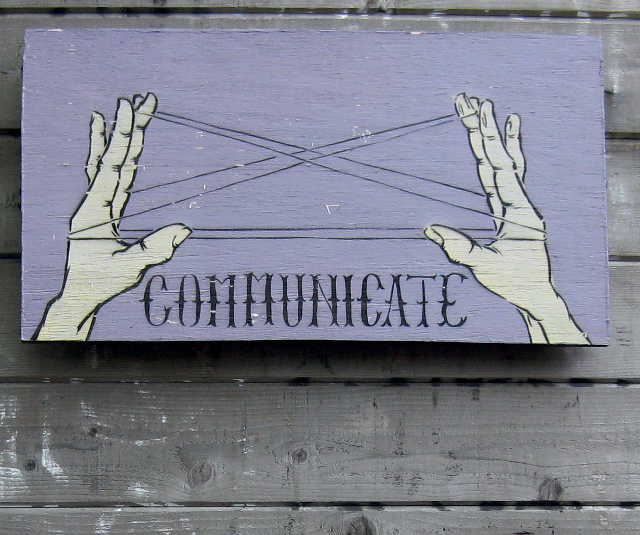Communication is the key to connection (read a previous post, Communication: Taking it to a Deeper Level). But just because we communicate, doesn’t mean we connect.
Usually, we interact on a practical level: “Pass the potatoes,” “pick Sarah up from school,” “I’m tired.” We make assumptions that the other hears us by how they act back, what they say back or what they don’t say back. Conversations also usually happen at such a quick pace that we take our interpretations as correct, and for granted. If the content of the conversation is on the practical level, then not much is usually missed. But if the content is of a more significant, complex, or tender nature, what we take for granted can be the most meaningful elements.

When we slow conversation down, and look at how messages are sent and interpreted, we find so much missing between the lines and through non-verbals; there’s so much left unspoken. I’m always curious about that unspoken message, because that’s often what we need the other to pay attention to: what felt disappointing or upsetting, what words or actions hurt, or what we wish could happen instead. However, when what’s left unspoken is hurtful, or maybe is too tender to come out explicitly, what we can end up with is a guarded or defensive conversation. If what we need the other to attend to is left under the surface, neither partner will be satisfied with the connection.
True communication is about taking the risk to put your deeper thoughts and feelings out to the other. To be able to draw the other’s attention to the tender underbelly of what we’re thinking or how we’re feeling. This assumes that the person you are putting the message out to will respect that message, or even better, is interested and values it. If conversations have become deeply entrenched in a pattern of defense or attack, however, we’re unlikely to feel safe to take such risks.
The building blocks for maintaining a safe context for vulnerable communication include mutual respect (avoid insults and cursing), openness (both to the other’s ideas and of your own ideas), courage both to say and hear what’s uncomfortable, and trust that the other wants you to confide and wants to confide in you. Try these tips to adhere to these building blocks, and for slowing the conversation down:
Take turns: share speaking time, without interrupting each other and perpetuating conflict.
Paraphrase: Try, ‘Are you saying, “…”?’, ‘Do you mean, “…”?’, or ‘I hear you saying, “…”,’ and don’t be afraid to be corrected if your interpretation isn’t accurate.
Validate: Try to empathize, and express understanding. For instance: “I can understand how you might see it that way, or feel that way,” “thank you for sharing with me.”
Pause the conversation: Take time apart, first indicating, “I need to think about this,” or “this is an important conversation, but can we continue it in __ minutes?”, or “I’m not comfortable continuing the conversation like this, can we come back to it in __ minutes?”
Practice vulnerable sharing: you may be surprised to find your partner responds with his/her own tender expression.
Photo Credit: Alan Turkus (https://www.flickr.com/photos/aturkus/)



